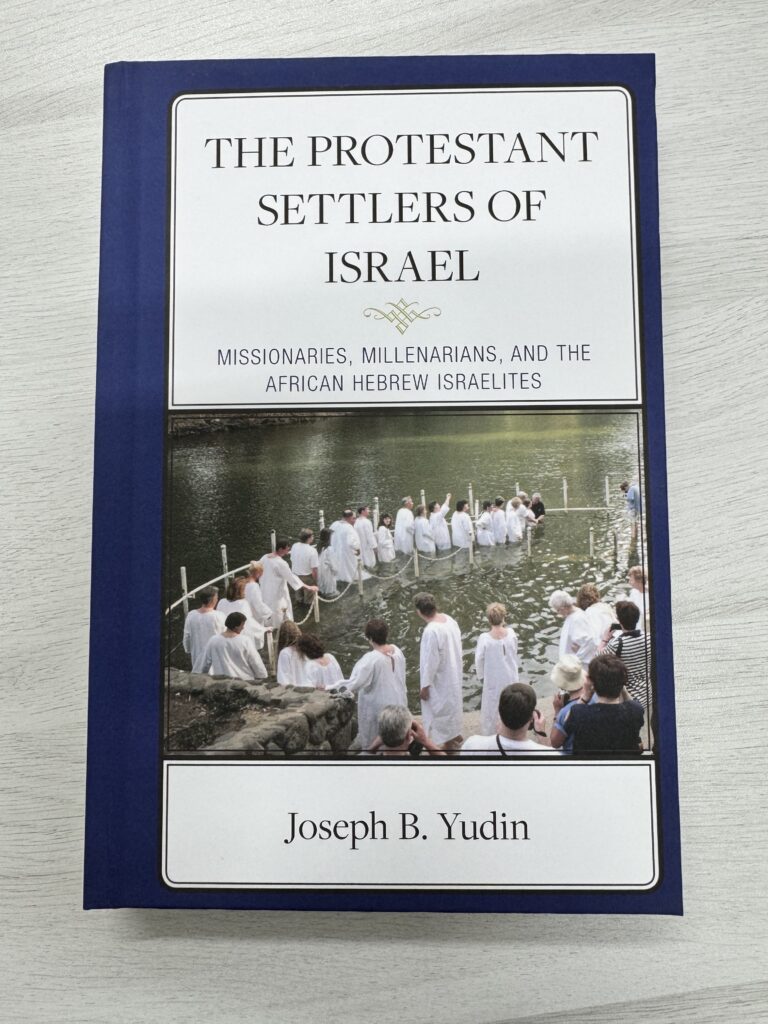By Joseph B. Yudin PhD
My interest in the Protestant communities of Israel was sparked many years ago, not long after I became a tour guide and started my company, Touring Israel, when I saw a young girl about ten years old, riding a classic Dutch-style bicycle down the cobblestone street in the center of the 19th century Israeli village of Zichron Yaakov built by the first Jewish Zionist on Mt. Carmel. She was particularly noticeable because of her clothing—a blue-and-white checked dress down below her knees, a turtleneck, and black stockings. Her head was covered by a white scarf, with two blond braids peeking out. She could have come right from a Norman Rockwell painting, an episode of “Little House on the Prairie,” or an Amish farm. Though I was quite puzzled by her unusual appearance, I quickly put her out of my mind. However, one day fifteen years later I saw what looked like the same girl riding the same Dutch bike, complete with the same checked dress, black stockings, and white scarf. She apparently hadn’t aged a day. The only difference was that now she was pedaling through the fields between my moshav (a semi-collective agricultural village) and Moshav Magen Shaul in the Jezreel Valley. This time, as a student in the Israel Studies department at the University of Haifa, I thought I’d dig a little deeper and get a paper out of it along the way.
I phoned my wife’s aunt and uncle, who live in Magen Shaul, and questioned them about the mysterious bike rider. They replied that in the 1990s, the main business of the moshav, raising flowers, was suffering due to a drought, which impacted the local economy till the moshav was on the verge of bankruptcy. At that point, the moshav’s council was approached by a representative of the Gilboa Regional Council, asking whether they would allow a group of Canadian Christians who had lived in Israel for decades (the Magen Shaul sect of the Berger Society) to rent some of the moshav land to live and build a factory on. In return, the “Canadians” as they came to be known, would pay both the moshav and the regional council taxes, as well as refurbishing the moshav’s swimming pool. They would stay in their own little world, with their own jobs, schools, and neighborhood, while injecting a steady supplemental income into the moshav. After debate and a vote by the moshav members, the deal was approved. The Canadians formed their own “kibbutz”, called “Kibbutz Shalev”, on the grounds of Moshav Magen Shaul in 2002, apparently an offshoot of their original “Kibbutz Beth El” in Zichron Yaakov.
Once I had successfully followed through on my plan to write a paper about the Magen Shaul sect, my instructor, Dr. Yaron Perry, suggested that I speak with his colleague, Professor Aryeh Kofsky, about the possibility of writing a thesis and dissertation on the sect. As my advisors, the two encouraged me to seek out other Protestant sects living in the state of Israel and to write a comparative dissertation for a Ph.D. I owe a large debt of gratitude to both these very wise men for guiding me through a long journey of arduous research and truth seeking. The result was the university’s approval of my dissertation, “Protestant Christian Settlements during the Twentieth Century.”
This book, The Protestant Settlers of Israel: Missionaries, Millenarians, and the African Hebrew Israelites, is the outgrowth of my dissertation. While intended primarily for academics interested in this subject, the book’s insights and knowledge are presented in a style that is also accessible to the layperson. It is my hope that all those who find their way to these pages discover valuable information within.


